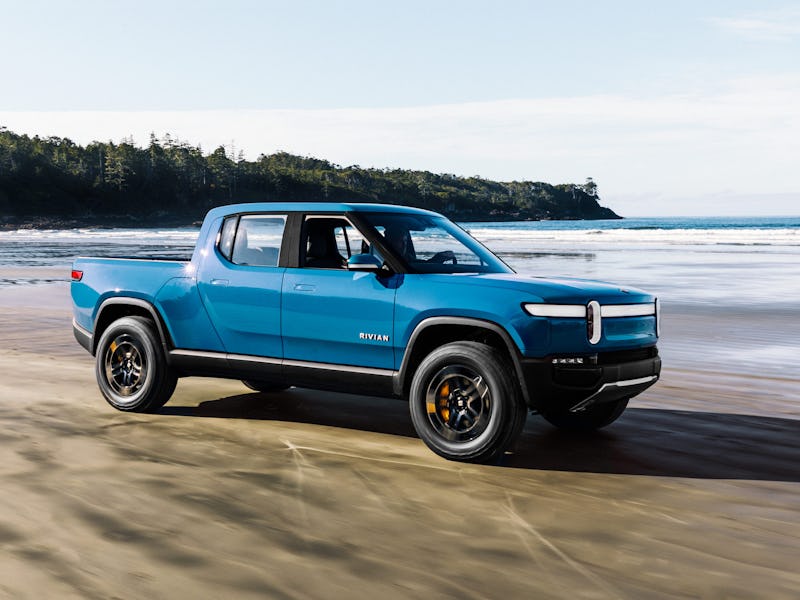Rivian could beat Tesla superchargers to a key underserved area
The electric car firm is preparing a move that could help owners beat range anxiety.

Rivian, the electric car firm that's taking aim at adventurers and explorers, could rival Tesla with its charging plans.
The Michigan-based company, which plans to launch its first two vehicles in 2021, is also planning a “Rivian Adventure Network" that will enable buyers to charge their cars while on the road. Electrek reported Monday the firm is aiming for national parks, off-roading pit stops and RV parks for its network, living up to the "adventure" aspect of its name.
The move could beat Tesla's supercharger network by answering a key complaint from its owners.
Why charging points are a charged topic – Electric vehicles depend on a charged battery to drive, but charging spots can be hard to locate and can take a long time to charge. Tesla, which sought to entice more gas car drivers with its 2012 Model S, answered this problem with the supercharger network that same year. There are now 16,585 superchargers worldwide, and the latest offer 250 kilowatts of power to get a Model 3 back on the road in just 15 minutes.
But some areas are still underserved by Tesla's sprawling network. In a June 2019 Reddit post titled "build superchargers at national parks," owners complain about areas of natural beauty being hard to access by electric car. City-to-city travel may be fine, but Tesla owners may still find themselves out of luck when they go for an adventure.
How Rivian could solve the issue – Rivian's network could help fans of the outdoors reach their favorite spots, aiming for those areas with their expansion plans. Electrek claims the firm is aiming for its first stations to be built in Moab, Utah – a city just on the doorstep of the beautiful rocks of Arches National Park.
The firm has made three key hires, all former Tesla employees, to bring this plan to life. The first is Carrington Bradley, a former Tesla supercharger manager, who is now Rivian's senior manager of charging deployment. The second is Sara Eslinger, who will now be senior product manager for charging infrastructure. The third is Kit Ahuja, who is director of the Rivian Adventure Network.
The Rivian R1S.
Rivian's network, like its cars, is expected to use the CCS charging port. This connector standard stands in contrast to the proprietary connector Tesla uses in North America. The CCS standard is, however, more commonly used by other manufacturers, and Tesla uses the standard in the European market. Rivian's network is also expected to aim for up to 200 kilowatts per charging station, with the ability to charge two vehicles at a time.
The firm's first vehicles are set to make use of these farther-afield chargers in a big way, with the R1T truck and the R1S SUV. Both can travel up to 400 miles, with a quad motor system and a wading depth of over three feet. The R1S can tow 7,700 pounds, while the R1T can tow 11,000 pounds.
Unfortunately, it may take some time before this emergent network gets put to the test. Rivian was originally set to release both vehicles in late 2020, but due to the coronavirus pandemic, this has been pushed back to next year.
The Inverse analysis – Charging is key to getting gas car owners to make the switch. Doug Alfaro, a former Tesla regional manager of charging infrastructure, told Inverse in February 2020 that the supercharger network emerged because Tesla wanted to build "the best car ever in all different scenarios to fully replace the combustion vehicle."
Getting new buyers on board is part of Rivian's appeal. If it can meet those current gaps in service, it could find a whole new group of consumers.